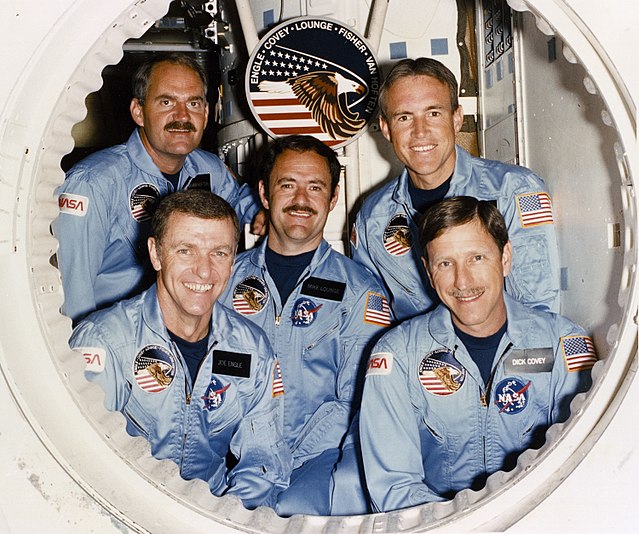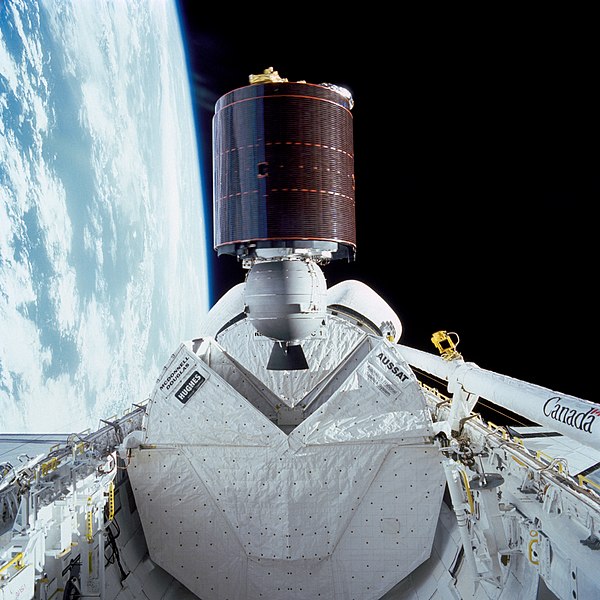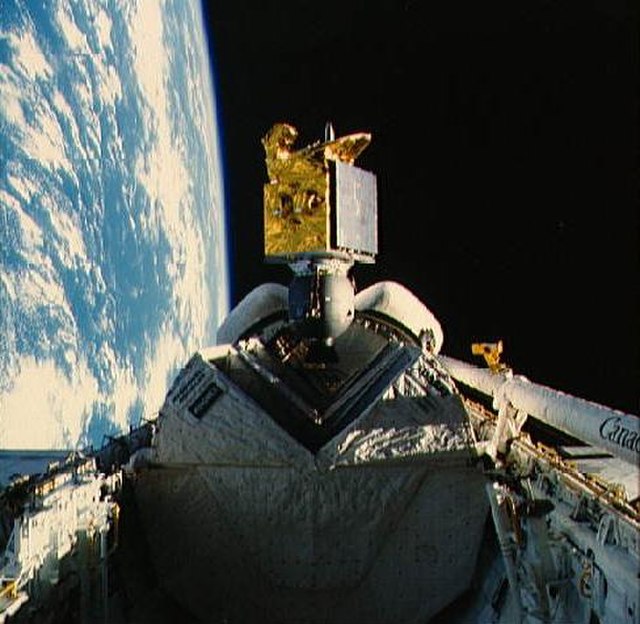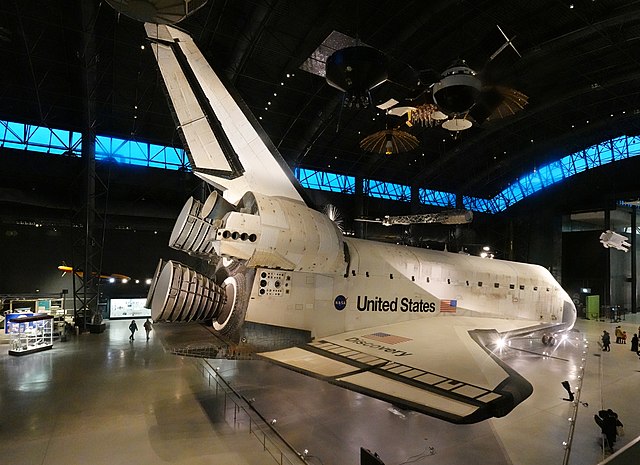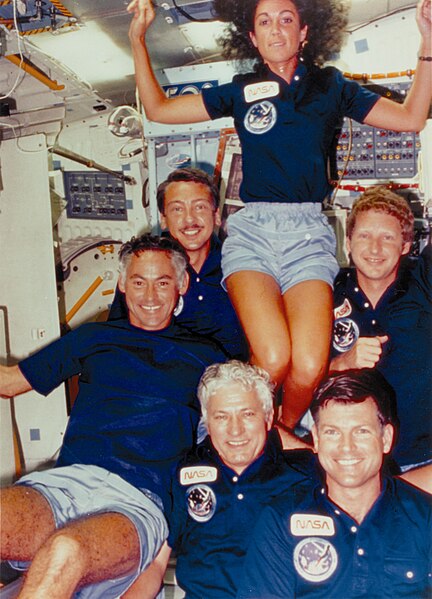STS-51-I was the 20th mission of NASA's Space Shuttle program and the sixth flight of Space Shuttle Discovery. During the mission, Discovery deployed three communications satellites into orbit. The mission launched from Kennedy Space Center, Florida, on August 27, 1985, and landed at Edwards Air Force Base, California, on September 3, 1985.
van Hoften next to the crippled Syncom IV-3 (Leasat-3) satellite, during the mission's first EVA.
Back row: James D. A. van Hoften, John M. Lounge, William F. Fisher Front row: Joe H. Engle, Richard O. CoveySpace Shuttle program← STS-51-F (19)STS-51-J (21) →
Deployment of Aussat-1
Deployment of ASC-1
Space Shuttle Discovery is a retired American spacecraft. The spaceplane was one of the orbiters from NASA's Space Shuttle program and the third of five fully operational orbiters to be built. Its first mission, STS-41-D, flew from August 30 to September 5, 1984. Over 27 years of service it launched and landed 39 times, aggregating more spaceflights than any other spacecraft to date. The Space Shuttle launch vehicle had three main components: the Space Shuttle orbiter, a single-use central fuel tank, and two reusable solid rocket boosters. Nearly 25,000 heat-resistant tiles cover the orbiter to protect it from high temperatures on re-entry.
Discovery in orbit in 2011, during STS-133, the orbiter's final flight
Space Shuttle Discovery at the Steven F. Udvar-Hazy Center
Discovery rollout ceremony in October 1983
On the maiden voyage of Discovery: Judith Resnik, Henry Hartsfield, Michael L. Coats, Steven A. Hawley, Charles D. Walker, and Richard M. Mullane


